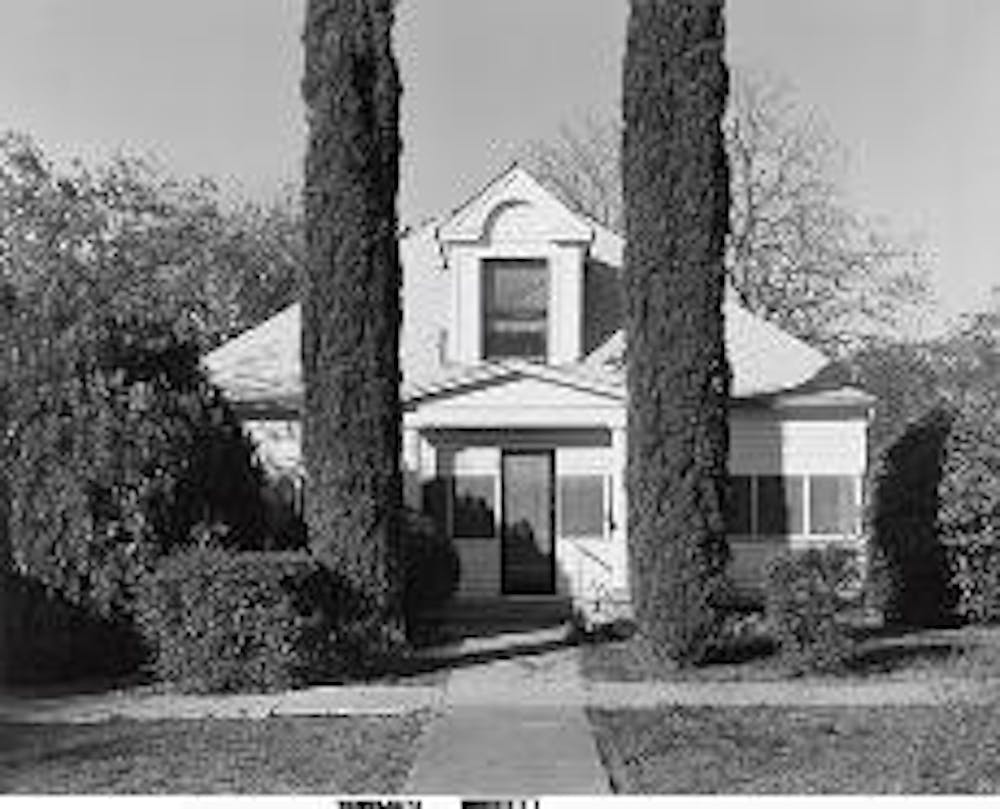The recently opened exhibit "Accommodating Nature: The Photographs of Frank Gohlke" at the American Art Museum showcases the artist's evocative black and white commentary on the American landscape. From his Texan roots to his later exploration of the Northeast, the subjects of his work are familiar and geographically diverse. Exquisite framing and use of light create a quietly beautiful collection of work, compelling because of its contemplation rather than its flash.
Gohlke's work carries on the passionate examination of nature championed by the famous naturalist essayists Henry David Thoreau and Ralph Waldo Emerson. His photographs don't necessarily tell a story, because nature itself seems to be both the subject and the point. The traditional naturalist theme of the passivity of man before nature drives his work. Accordingly, enjoying this exhibit requires a little bit of patience. His photos depict scenes you pass without thinking in your daily life - from Texan grain silos to a teenage boy mowing his suburban lawn. The resulting photograph is beautiful and thoughtful, yet a little bit boring. "Walden" is an insightful and skillful piece of literature, but it's rarely called a page-turner.
Unlike his artistic heritage, the conclusions of Gohlke's work don't seem fresh. Our generation has been steeped in this type of visual lesson about the power of the natural world. The point of his photography often seems a bit tedious. Depicting the grandeur of nature can be an alluring and majestic visual theme, but also a familiar one. His collection is traditionally beautiful, but lacking the pop of fresh conclusions. In one photograph, a vividly colored swamp subsumes an electric fence and a caution sign. The juxtaposition of the man-made and the natural is visually appealing, but not groundbreaking.
Regardless, this new exhibit of Gohlke's work merits a trip to Chinatown. The layout of this collection is thoughtful, progressing from his earlier black and white photography in rural Texas to his modern color collection from just outside Boston. Further, several of his photographs are insightful and compelling. For example, in "Breezedale, Rocky River, Ohio," Gohlke captures the stifling squareness of the suburbs in the background of a teenage boy mowing his lawn. The age of the subject isn't even immediately clear, suggesting the thoughtless passing of time from one generation to the next in suburban America. Gohlke's work possesses all the markers of a talented photographer: thoughtful composition, beautiful use of light and compelling focus can all be found in his pictures. The natural world doesn't offer the same glitz and irony found in human subjects, but his images are insistently beautiful and important all the same. His work is valuable because in the end it makes you look twice at your surroundings.
"Accommodating Nature: The Photographs of Frank Gohlke" is currently on view at the American Art Museum. The gallery is open from 11:30 a.m. to 7 p.m. daily. For more information, visit americanart.si.edu.
You can reach this staff writer at agoldstein@theeagleonline.





